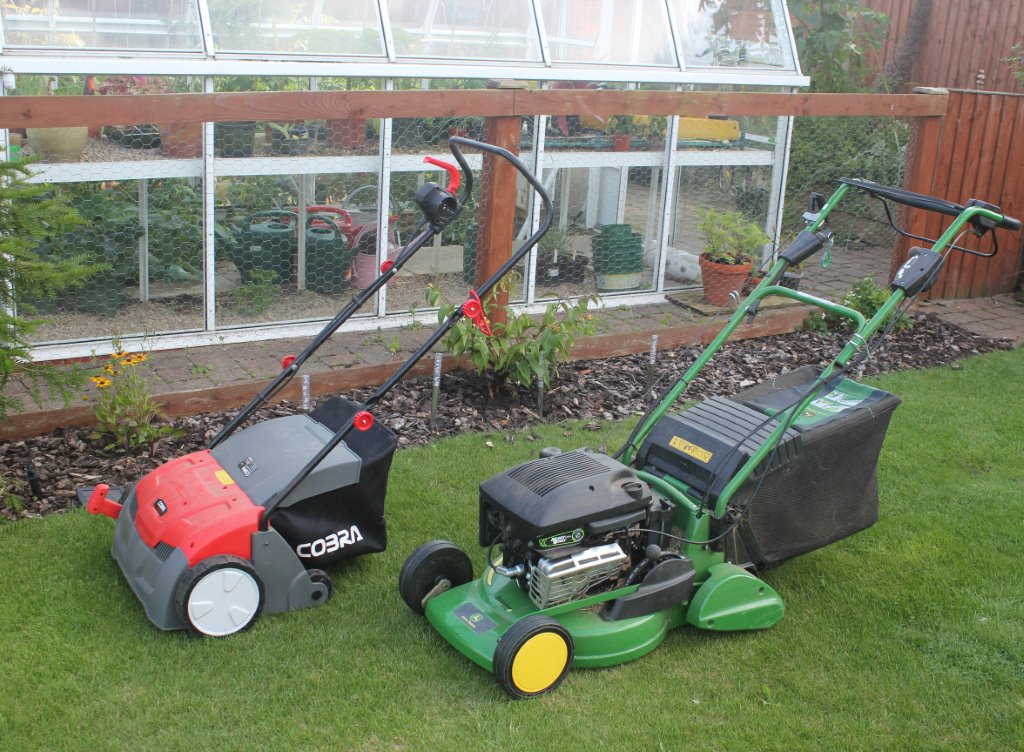September is traditionally the month of lawn maintenance, helping the grass to recover from summer and prepare for winter. Rake out the dead grass and moss (collectively known as ‘thatch’) that has accumulated over the mowing season with a wire rake. On larger lawns, hire a scarifier sharing the cost and use with friends or buy an electric version.  Scarify first one way, then at 90 degrees, Spike compacted areas with a fork, push the spikes into the ground, with the tines facing forward, rocking it backwards and forwards to loosen the soil. In severe cases you may need to ‘hollow tine’ to relieve surface compaction, particularly on clay soil, a job that needs doing around every three years. Hollow tiner’s can be hired, though I have found them to be very expensive for one person. It is worth shopping around and sharing the cost with friends and although they are not always easy to locate, it is well worth the effort. Feed with high potash autumn lawn fertiliser afterwards then brush in top dressing and over-sow worn patches, with seed.
Scarify first one way, then at 90 degrees, Spike compacted areas with a fork, push the spikes into the ground, with the tines facing forward, rocking it backwards and forwards to loosen the soil. In severe cases you may need to ‘hollow tine’ to relieve surface compaction, particularly on clay soil, a job that needs doing around every three years. Hollow tiner’s can be hired, though I have found them to be very expensive for one person. It is worth shopping around and sharing the cost with friends and although they are not always easy to locate, it is well worth the effort. Feed with high potash autumn lawn fertiliser afterwards then brush in top dressing and over-sow worn patches, with seed.
The first frosts can strike anytime in September, depending on where in the country you garden. Although they’re not often particularly hard, they can still signal the end for tender plants. You’ll know from past experience when to bring tender plants like Osteospermum’s and Agyranthemum’s under cover in your area; just listen to the weather forecast, so you don’t get caught out and take soft tip cuttings. Young plants, are vigorous and perform better the following year, anyway.
Take semi ripe cuttings from Rosemary and other woody herbs. Remove several young healthy shoots from this year’s growth about 2.5-3cm long, trim them just below a leaf joint with a sharp pair of secateurs or knife. Using your finger and thumb, strip off the leaves from the bottom 2.00 cm of the cutting, dip the bottom 2.5cm in hormone rooting powder, tapping lightly to remove any excess. Fill a 9cm pot with cutting compost, firm it gently then insert the cuttings round the edge so the leaves of adjacent cuttings do not touch then firm the compost again. Water thoroughly, allow the compost to drain then put the pot in a propagator or on a sunny windowsill. Keep the compost moist, not waterlogged and they will root in a couple of months.
It is also time to lift and replant ‘Foxgloves’ and other spring flowering biennials sown earlier in the year, into their final flowering positions. Lift on a dull day, when the soil is moist and water well after transplanting. Buy and plant your spring bulbs as early as possible for the widest possible choice and so they are established before the onset of cooler weather and plant your garlic, too. It is also the perfect moment to give evergreen hedges a final trim before the onset of winter and cut back the side shoots of climbing roses to two buds of the base.
Happy Gardening! Matt










